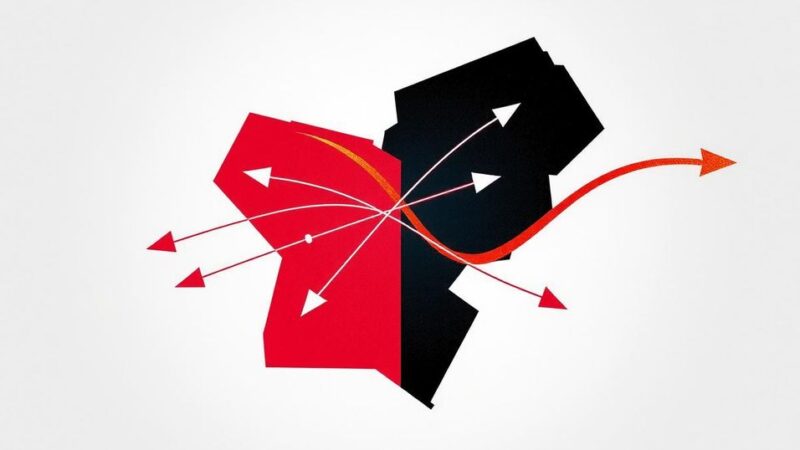Syria’s new president, Ahmed Shara’a, faces escalating tensions with Lebanon, primarily due to Hezbollah’s actions and recent border clashes. Lebanese military buildup signals increased confrontations. Despite attempts at cooperation, historical grievances and military disparities complicate relations. Shara’a’s government aims to combat smuggling and restore order while responding to regional pressures, necessitating strategic management of cross-border issues.
Syria’s newly appointed president, Ahmed Shara’a, and his administration face significant challenges just two months into power as tensions escalate between Syria and Lebanon. Hezbollah’s ongoing presence in Lebanon poses a threat to Syria’s stability, particularly following recent clashes near the Lebanese border. These incidents signify confrontations arising from Syria’s efforts to combat lawlessness and smuggling in the region, highlighting the new government’s struggle to solidify authority.
The backdrop of these challenges is further complicated by recent diplomatic developments, including a visit from U.S. Deputy Special Envoy for the Middle East, Morgan Ortagus, to Lebanon, where a new government has taken shape. Lebanon, under its new president—a former army commander—appears assertive regarding Syria, while its military remains equipped with American supplies. In contrast, Syria’s military capabilities have significantly diminished over years of conflict, limiting its response options to border tensions.
In response to the rising tensions, media reports suggest that Lebanon is mobilizing its military forces towards the border with Syria, indicating concerns of escalating violence. Both Syrian and Lebanese authorities have intensified their military presence along the border amid clashes. Syria has proclaimed efforts to close smuggling routes, though state media downplays the operation’s success, revealing the complexity of the situation on the ground.
Amidst this turmoil, the Syrian government is attempting to unify factions that have emerged in the aftermath of its previous regime’s collapse. Recent incidents in regions such as Afrin show Syria’s continued efforts to establish control within its own territories. Notably, communications between President Shara’a and Lebanon’s new president, Joseph Aoun, suggest potential for cooperation, yet both nations grapple with internal and external pressures that complicate collaboration.
The history of Syrian-Lebanese relations, marred by past military occupations and conflict alignments, continues to shape current interactions. Following clashes near strategic points like Qusayr, the Lebanese army has responded forcefully to artillery fire from Syria, showcasing the fragile equilibrium that exists on their border. Local municipalities in affected areas are demanding action from the Lebanese army to address violent incursions and protect civilians from cross-border attacks.
Syria’s government has acknowledged the ongoing challenges posed by smuggling rings and border gangs, emphasizing a commitment to restore order and security within its territory. Reports indicate that both sides have engaged in hostilities, with groups such as Hayat Tahrir al-Sham complicating the landscape further. President Shara’a, under pressure to ensure regional stability while hosting international delegations, must prioritize the situation with Lebanon to prevent further escalation.
The regional dynamics between Syria and Lebanon remain fraught, driven by historical occupations and conflicts. Hezbollah’s influence in Lebanon continues to pose a challenge to Syria’s new government under President Ahmed Shara’a, who is attempting to exert control and stabilize the situation after a prolonged period of internal conflict. The geopolitical tensions are exacerbated by the military capabilities and support both nations receive from global powers, particularly the United States’ involvement with the Lebanese army.
The ongoing tensions between Syria and Lebanon illustrate the complexities faced by Syria’s new government under President Shara’a. With Hezbollah’s active role and recent clashes sparking concerns of further violence, both nations must navigate their historical ties while addressing immediate security threats. As military buildups and calls for intervention escalate, the future of Syrian-Lebanese relations depends heavily on effective communication and coordinated response efforts between the two governments.
Original Source: www.jpost.com






